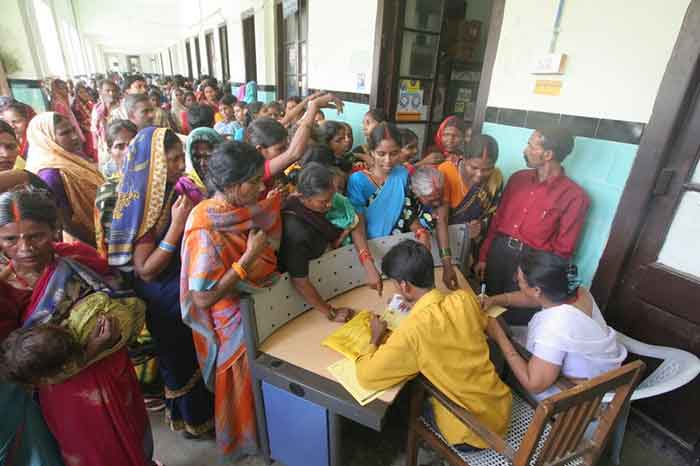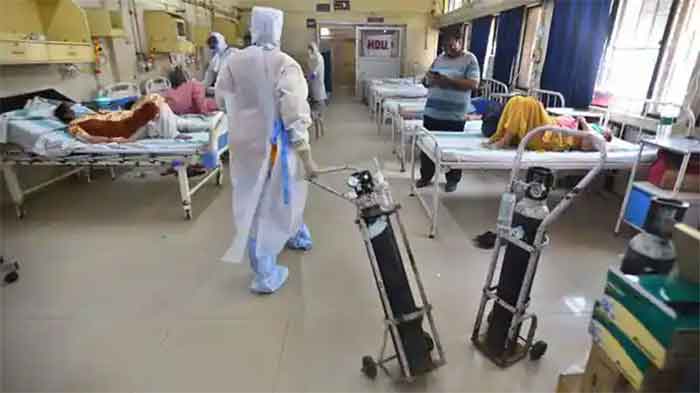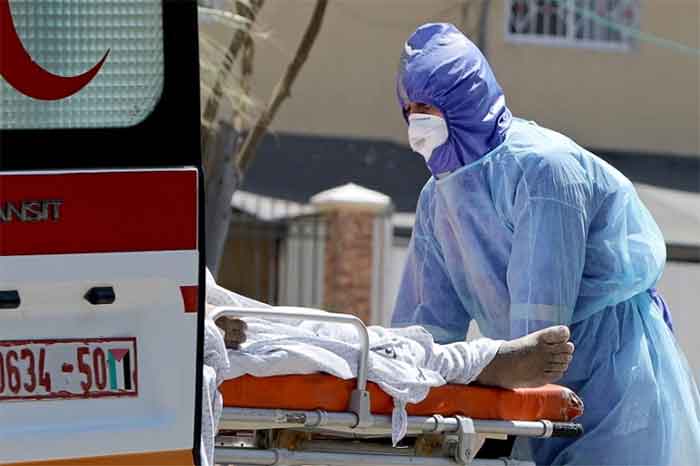
Healthy families are the foundation for healthy communities. When people are healthy, humanity moves forward. There is nothing more important than good health, and reliable healthcare for all the family. Universal health coverage (UHC), which aims to ensure that all people receive quality and adequate healthcare without suffering financial hardship, is an integral part of achieving the UN-mandated Sustainable Development Goals (SDG).
A sound health system enables countries to make the most of their strongest asset: human capital. Physical and mental well-being is at the core of creating communities that thrive. Poor access to healthcare is a main impediment to poverty reduction and driver of inequality. Health is, therefore, a foundational investment in human capital and in economic growth — without good health, children are unable to go to school and adults are unable to go to work. There is nothing more important than good health, and reliable healthcare for all the family. That health is a clear priority for present and future generations underpins the objective of achieving universal health coverage.
India’s economy is soaring and is now the world’s envy but its healthcare system remains an Achilles’ heel. For millions of people, the high costs of treatment continue to undermine economic progress. This is largely on account of the country’s dilapidated healthcare system — a major symptom of the dire lack of funding. India ranks poorly in international rankings on most health indices. Illnesses are a severe risk and can shave off most of the hard-earned savings in low income communities. They are the number one route to bankruptcy.Much blame has to laid at our screwed-up healthcare system, which scorns the very idea of public health and treats access to medical care as a private luxury that is rightfully available only to some.
Healthcare has now become a critical leverage point where government action could have the maximum impact. The government’s development wisdom is now focused on identifying the strategic leverage points where successful action could trigger many supportive reactions
Poor people get sick quicker stay sick longer need medical aid most yet get it least. In war times and peace times, fair weather and foul panic and prosperity .Some are poor because they are sick. Others are sick because they are poor
The growth of healthcare facilities has been concentrated in the private sector even as the government hospitals continue to be under-resourced, understaffed and poorly managed, thus delivering poor quality care. This has led to a rapid mushrooming of unregulated private providers. Health systems—including strong primary health care services as a foundational cornerstone of UHC—are imperative if the world wants to deliver on health for all.
Healthcare expenses are a major cause of impoverishment for working families. Private healthcare has catastrophic costs that shave off hard-earned savings of patients and their families, thereby becoming a primary route to bankruptcy. All these have spillover consequences for families, resulting in less money being available to households for food, education, housing and long-term plans. A health event is a bigger risk to farmers than an unsuccessful crop. Once they sell their land or livestock, they become indentured labourers and that takes a generation or more to fix. The effects of poor health on workforce productivity are well documented, too. Indians work for just 6.5 years at peak productivity (compared to 20 years in China, 16 in Brazil and 13 in Sri Lanka), ranking 158th out of 195 countries in the International Ranking of Human Capital.
Health insurance is emerging as an important financing tool in meeting the healthcare needs of the poor. Life is a tough ordeal for families hit by “health shocks”. Poor families have long suffered the triple curse of sudden illness — the trauma associated with sickness, the financial burden of intensive healthcare and the loss of wages. By managing risks and avoiding debt, those who have micro-insurance policies are in a position to protect the meagre wealth they accumulate, generate more income and even get a fair chance to rescue themselves and their families out of the mire of poverty. The poor prefer health insurance to life insurance, as they say, “We die once but go to the doctor many times each year.”
Community-based health insurance, rather than market-mediated or government-provided insurance, is widely considered an appropriate way of reaching and protecting the poor. The development of private health insurance has potential risks and benefits in terms of healthcare access for the poor. It could result in substantial long-term welfare benefits but it is unaffordable for most low-income families.
In the last few years, the microfinance industry has been at the forefront of creating innovative insurance products for the underserved, which complemented the government’s pension platform. The synergy between the private sector and government can help ensure that everyone has the rights and access to improved health outcomes.
India must revitalize its public health system to ensure access, outcome, quality and affordability. The focus must be on finding solutions which are affordable, scalable and yet of a high quality. The government needs to supplement curative services with preventive measures by strengthening ancillary civic services like insect management, water purification systems, sewage systems and plants for the treatment of industrial effluents and waste. Due to poor hygiene and sanitation, people are suffering from preventable diseases like pneumonia, malnutrition, malaria and tuberculosis.
The biggest disease burden sits on the bottom pyramid of 500 million people. They don’t have access to reliable diagnosis or proper treatment. If they get diagnosed, they find it hard to get treatment. Government-run hospitals are free for everyone but access is difficult, quality is abysmal and corruption is endemic. Another challenge for the health sector is the lack of provisions to deal with non-communicable diseases such as cardiovascular diseases, cancer, chronic respiratory diseases and diabetes.
Unlike the short-term effects of communicable diseases, the dual health and economic impacts of non-communicable diseases on individuals, families and households are devastating and long-lasting. Changing this would mean providing a clean environment and potable water so that infectious diseases are contained to the minimum and a stress-free and healthy lifestyle to ward off the growing threat of non-communicable diseases.
There is a massive shortage of healthcare professionals in the country and their supply must therefore be expanded rapidly if we want to fulfil our commitments in this sector.
Our public health system isn’t geared toward noncommunicable diseases. So, the challenge going forward is to focus on disease control, prevention, surveillance, support, and awareness and helping ensure easy, inexpensive, and reliable availability of medicine to everyone, Communicable diseases make their presence by making an individual fall ill, which makes her want to seek medical care. In contrast, non-communicable disorders generally do not produce symptoms until major complications involving important organs – like heart attack, stroke, kidney failure or blindness – develop, which is generally too late. Non-communicable disorders like high blood pressure, diabetes and kidney disease may be discovered either during a routine health check or when the patient undergoes evaluation for an unrelated condition.
Competing priorities force patients to the demands of daily life more seriously, and a disease that is not bothersome is ignored. Further, the main providers of healthcare are doctors, who are relatively scarce and quite expensive. The need to repeatedly visit a faraway doctor for management of conditions that are likely to be present for a person’s lifetime makes optimal sustainable care unaffordable
All stakeholders now agree that increasing penetration in care delivery for chronic non communicable diseases will require us to move away from the West’s physician-based models of healthcare delivery, which favours the relatively privileged. The democratisation of this process requires us to identify resources in the community and co-opt them to improve efficiency. Programmes have to be transparent to the people to ensure fairness. To make health services more available and effective , policies should remove user fees, tackle discrimination, foster innovations in service delivery, and break down public expenditure by quintiles.
Rural India has seen several innovative efforts in community-based health services which enable members living in remote communities to have access to affordable preventive and primary healthcar .The village health workers provide prenatal care, monitored child immunizations and also initiate self help groups to fund cooperative business enterprises. Any visitor to villages, where these community healthcare models are primary drivers of health awareness, will marvel at the ability of these health workers to connect with and explain things to women.
Their lack of education is not a handicap; it is an advantage. They understand how to reach the people who most need reaching: Illiterate, vulnerable and poor village women. They know how they think and live, because they are one of them. Co-designing co-creating, and co-owning health services is an increasingly effective and scalable path to inclusive and sustainable health outcomes. Putting people and communities in charge of their own healthcare also leads to better outcomes and increased productivity through leverage of traditional knowledge and local healing plant material.
The Government, too, has learnt from these initiatives and its public health programmes are modelled around them. The community health workers, including the Accredited Social Health Activists (ASHA) and the Auxiliary Nurse Midwife, are indeed the foundation of our public health care system and have played a central role in its success, thereby reducing maternal and child mortality. ASHAs are central to India’s strategy to improve maternal and child health and are selected by the village they serve.
Without keeping the “last mile” in mind, global health targets are set, and programmes are designed and implemented. We cannot achieve the goal of reaching everyone, everywhere with vital health services without an effective last mile. And ensuring all people can access quality and affordable health services is essential. The government too has embraced the lessons from these grassroots initiatives and the public health programmes are modeled round them. The community health worker, including cadre such as the ASHA worker and the Auxiliary Nurse Midwife, is indeed the foundation of our public healthcare system. These professionals have played a central role in the success of our public health programmes which substantially reduced maternal and child mortality. They are the best health mentors, since they are often closest to the people in most need.
Public policy needs to actively promote those innovations that can accelerate our journey to universal healthcare: increased access, quality and affordability of healthcare; increased responsiveness of the system to healthcare needs; greater health equity; autonomy in healthcare choices; and above all, improvements in the social determinants of healthcare.
World leaders recognized the importance of primary health care forty years ago at Alma-Ata. That declaration did gain traction, but there was slow implementation for a variety of reasons—especially lack of political will. Today, we have political momentum and the technological advancements to make achieving universal health access a reality. Universal health coverage will become a reality only if individuals, families, and communities are empowered to identify their own health needs—taking action to address the diseases that increase cost of care and contribute to the burden on our health systems
The pandemic has already exposed the grim state of the social sector and it doesn’t need to be overstated that, far from engaging in public relations exercises that apparently demonstrate an extraordinary commitment to development issues, we need to understand the role of the state in protecting and promoting the social sector. An examination of the budgetary allocations made in the last few years plainly shows that the policies for social security in India have been designed to support corporate capitalism and private interests. While the need for privatisation is understandable, there is need for stringent regulations and consumer protection measures to protect the general public from the insidious ways the private hospitals use to soak social care funds to bolster their profits. While we must harvest the benefits of globalisation, we must also remedy its ugly manifestations.
Fifty years ago, during the Cultural Revolution in China, a cadre of “barefoot doctors”—some 1.5 million peasants who received intensive three- to six-month training in anatomy, bacteriology, birth control, infant and maternal care, and other areas—were sent to remote pockets of the country to provide basic health care . This low-tech medical corps (named for the fact that many pursued their occupation when they weren’t tending to patients in the ocmmunity) was highly successful in significantly reducing infectious disease and boosting life expectancy. The programme served as a model and inspiration for the famous 1978 Alma-Ata Declaration on primary health care.
Twenty-first-century barefoot doctors will be most suitable in areas that are remote and have large populations of older people and women left behind in the global wave of migration to cities. These doctors will need to be empowered to become the foundation of the health care system. They will also need to earn a decent income—although income alone is not what will keep them in their jobs. If 21st-century barefoot doctors become a reality, it could transform today’s treatment-centric health care systems into systems that keep people healthy.
India is now far better placed to make inclusive health a reality. An enormous social capital has been built up over the years, which can be leveraged to support innovations in healthcare for the development of new and affordable drugs, therapies or medical devices.
Several laudable policies are already in place. The direction of travel, so to speak, is right but we have to accelerate the pace of the journey. For reforms to be successful we need hard-coded timelines and the accountability of those tasked with the administration. It is now for the policy doctors to collaborate with the medical professionals to come up with radical solutions that can build a healthier world for everyone. Our collective end goal must be towards achieving high-performing health systems where people have access to, affordable reliable, accountable and accessible and health care.
Moin Qazi is the author of the bestselling book, Village Diary of a Heretic Banker .He has worked in the development finance sector for almost four decades .He can be reached at [email protected]
SIGN UP FOR COUNTERCURRENTS DAILY NEWSLETTER















































